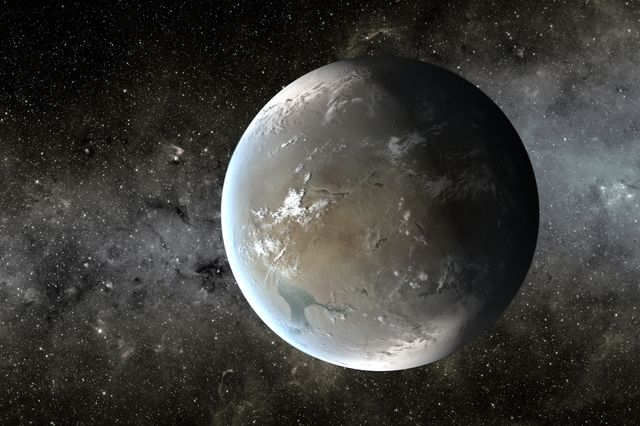Astronomers combine climate, orbit models to show that exoplanet Kepler-62f might be able to support life.
Scientists at UCLA believe that distant planet known as Kepler-62f could be habitable.
Above, an artist’s rendering of Kepler-62f, that is far enough from its star and its atmosphere would need a high concentration of carbon dioxide to maintain liquid water on the planet’s surface. Credit NASA Ames/JPL-Caltech/T. Pyle
The planet, which is about 1,200 light-years from Earth in the direction of the constellation Lyra, is approximately 40 percent larger than Earth. At that size, Kepler-62f is within the range of planets that are likely to be rocky and possibly could have oceans, said Aomawa Shields, the study’s lead author and a National Science Foundation astronomy and astrophysics postdoctoral fellow in UCLA’s department of physics and astronomy.
NASA’s Kepler mission discovered the planetary system that includes Kepler-62f in 2013, and it identified Kepler-62f as the outermost of five planets orbiting a star that is smaller and cooler than the sun. But the mission didn’t produce information about Kepler-62f’s composition or atmosphere or the shape of its orbit.
Shields collaborated on the study with astronomers Rory Barnes, Eric Agol, Benjamin Charnay, Cecilia Bitz and Victoria Meadows, all of the University of Washington, where Shields earned her doctorate. To determine whether the planet could sustain life, the team came up with possible scenarios about what its atmosphere might be like and what the shape of its orbit might be.
“We found there are multiple atmospheric compositions that allow it to be warm enough to have surface liquid water,” said Shields, a University of California President’s Postdoctoral Program Fellow. “This makes it a strong candidate for a habitable planet.”
The research is published online in the journal Astrobiology
Read more at UCLA






Leave A Comment